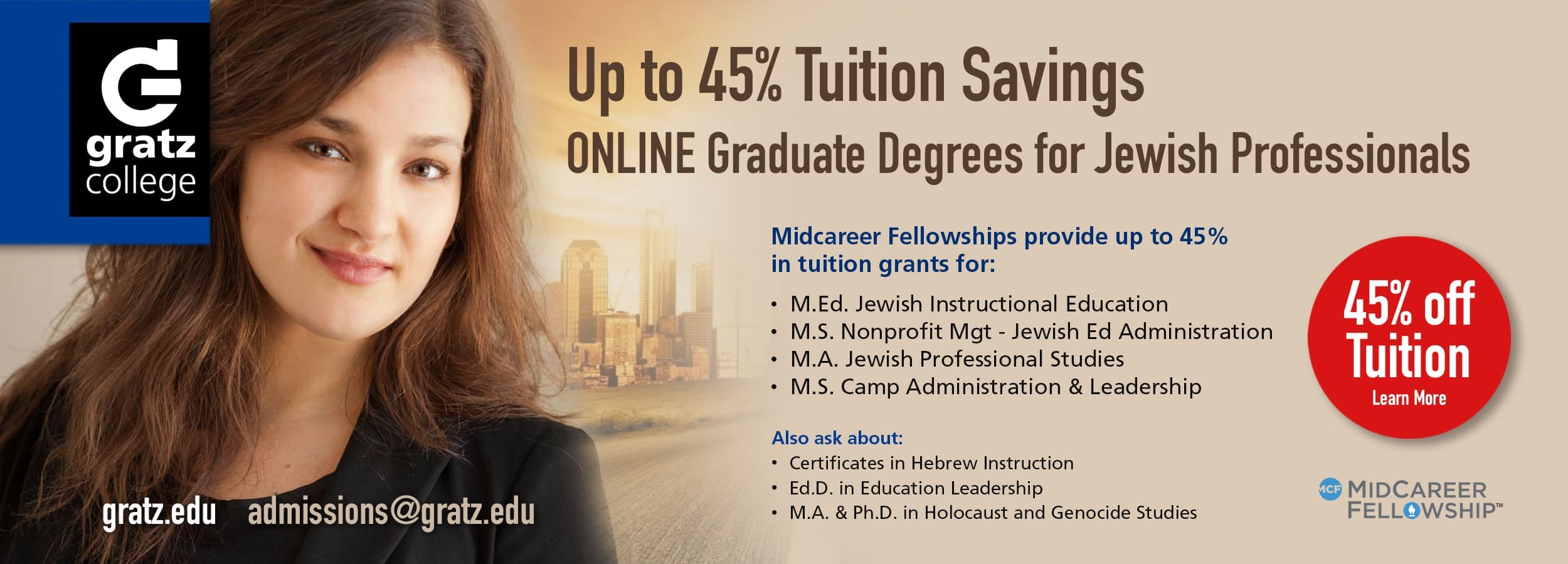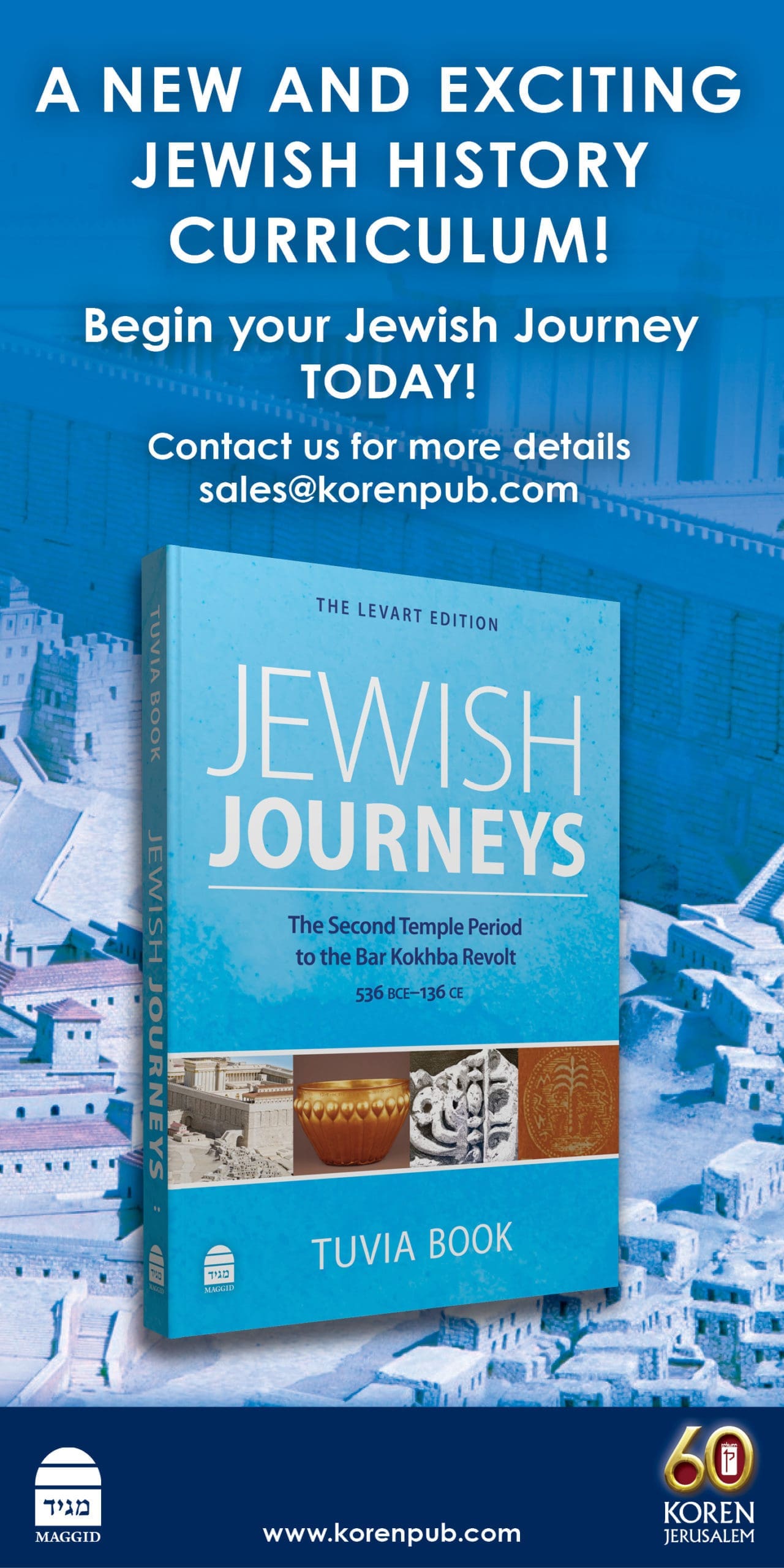Background and Goals
This article follows a year-long process that addressed multiple challenges in teaching Jewish History at Milken Community School, in Los Angeles, California. Within the school’s social science department, Jewish History is addressed in a two-year course (grades 9 and 10) titled World and Jewish History.
The 9th grade course begins with antiquity and ends with the French Revolution, and includes Jewish History units focusing on First Century Judaea: The Jewish Reaction to Roman Encroachment through 70 C.E.; the Golden Age of Spain and the Expulsion of 1492: Conflict and Cooperation between Jews, Muslims, and Christians in Iberia; and the Haskala.
As we reviewed our program we realized that we wanted to make three significant changes. First, we decided to adapt the course to a developing standards-based curriculum. Second, we wanted to teach Jewish History as an integral part of historical eras rather than as supplementary units. Third, there was a desire to diversify the course content to include previously understudied groups.
Integrating Jewish History: Specific Instructional Problems
The decision about integration was sparked by an observation by the rabbinic director that the course structure treats Jewish History as an addendum to the historical topics that are traditionally taught in similar courses that do not have a Jewish History component. For example, after the Roman history unit is completed and assessed, students learn about the history of first-century Judaea as a related, but not integrated, topic. Indeed, we realized that treating the Jewish History as an addendum yielded insufficient time to treat that part of the curriculum sufficiently. For example, the Haskala did not receive sufficient instructional time as it is covered towards the end of the 9th grade in the same quarter as the Enlightenment and the French Revolution. While the subject is covered in other departments’ courses, we noticed that this essential topic was not covered to the extent necessary to prepare students for further studies in 19th-century Jewish history as well as the development of Jewish identity within the historical context. This curricular situation required either cuts in content, which was not palatable, or a strategic decision on more effective integration of Jewish history into the “mainstream” historical topics. Thus began the process of integration.
Essential Questions for Jewish History: Goalposts for Student Learning
The first step was to formulate specific essential questions for Jewish History, and we developed the following:
- How have Jews/Jewish communities responded to internal and external threats?
- How have Jews/Jewish communities creatively adapted and contributed to global societies throughout time?
Although succinct, these questions have been vital in framing the teaching of Jewish History as well as its integration into the traditional historical topics. Firstly, the questions greatly eased the construction of both practice assignments as well as assessments within the context of the school’s emphasis on standards-based grading, as the students now have specific learning outcomes in their study of Jewish History. Furthermore, the questions attempt to gain a balance between the simplified lachrymose stance on Jewish history (Graetz) and a more complex approach towards the subject matter (Baron). The new formulation led to the creation of a specific assignment for the honors level segments of the course: an analysis of the complex and difficult set of interactions between the various groups of Jews living in Medina in the 7th century C.E., Muhammad and his Muslim followers, as well as non-Muslim Arabs. The specific assignment helped students break down monochromatic perceptions of the diverse groups living in Medina in the early Muslim period by learning not only about inter-group differences but also intra-group fissures. The specific text students analyzed was “Muhammad and the Jews of Medina” (chapter 5 from Rabbi Reuven Firestone’s An Introduction to Islam for Jews).
Diversifying Jewish History Content through Integration
One of the things we discovered through working on the integration process was that it was possible to do more even within the same amount of instructional time. Indeed, the integration process has allowed for greater attention to be paid to the Jewish History components of the course while not sacrificing other content.
First, the integration process has meant that Jewish history will be increasingly taught as part of the larger historical context students are learning as opposed to instruction of the topic as a separate stand-alone unit. For example, a new project-based assessment on the life of the 16th-century conversa Gracia Mendes Nasi, which was originally taught as part of a stand-alone Jewish History unit will now be an integral part of the Renaissance topic, as Mendes Nasi’s life connects with essential subtopics of Renaissance studies including humanism, a renewed interest in secular learning, the system of patronage, the book publishing revolution, nascent capitalism, and global trade, conflict between secular and sacred perspectives, and the evolving role of women in society. Concurrently, the complex issues of commitment to Judaism and its values while experiencing both forced assimilation and increasing amounts of voluntary participation in non-Jewish society also help students deepen their knowledge of the Jewish experience. Furthermore, the life story of Mendes Nasi brings to the forefront a previously understudied individual whose life gives much insight into women’s history from both the general Renaissance and Jewish perspectives while at the same time helping students learn about the history of the Ladino-speaking Sephardi community. The rich history of the Sephardim presents a history of cross-cultural connections and relates the many decisions Spanish Jews had to make as members of a larger Iberian community that presented both opportunities and challenges. Additionally, including Sephardi history is central towards creating a more diverse and inclusive form of Jewish History education that helps students learn about the many different Jewish experiences from around the world. The student population at Milken is very diverse, and it is one of my central goals as a teacher of Jewish History to facilitate learning about the history of my students’ respective identities.
Ultimately, what emerges from this process is an interesting and enriching historical mosaic of diverse histories that shed light on one another, all within the currently available instructional time.
Conclusion
The benefits of integrating Jewish History are both practical to implement and productive, particularly in helping solve the difficult conflict between teaching enriching Jewish history content and having a limited amount of instructional time. Additionally, integration helps students view Jewish History as part of General History, rather than as a supplemental moment that is presented only because it relates to the identity of the students. This is particularly important for the pre-19th century period as traditional history education largely ignores Jewish History from before the 19th century with this topic only “beginning” with the Dreyfus Affair. Therefore, teachers may be hesitant to include Jewish history as part of the World History curriculum for the pre-1894 periods as this step would require additional but unavailable instructional time. The integrative process, therefore, can be used as a way of refining World History courses to include more Jewish history within the available time. This instructional reflection will be helpful to World History teachers not only at Jewish schools but also for instructors at non-Jewish schools who will be able to include more Jewish History as part of the standards-based World History curriculum established by individual states with the additional benefit of students learning about the richness and diversity of the Jewish experience.

Alex Mendez has taught History and English for more than two decades and is currently in his fourth year at Milken Community School in Los Angeles where he has developed a passion for Jewish History. He is particularly interested in the history of the Jews of Spain and their contributions to world culture.
Reach 10,000 Jewish educational professionals. Advertise in the upcoming issue of Jewish Educational Leadership.







